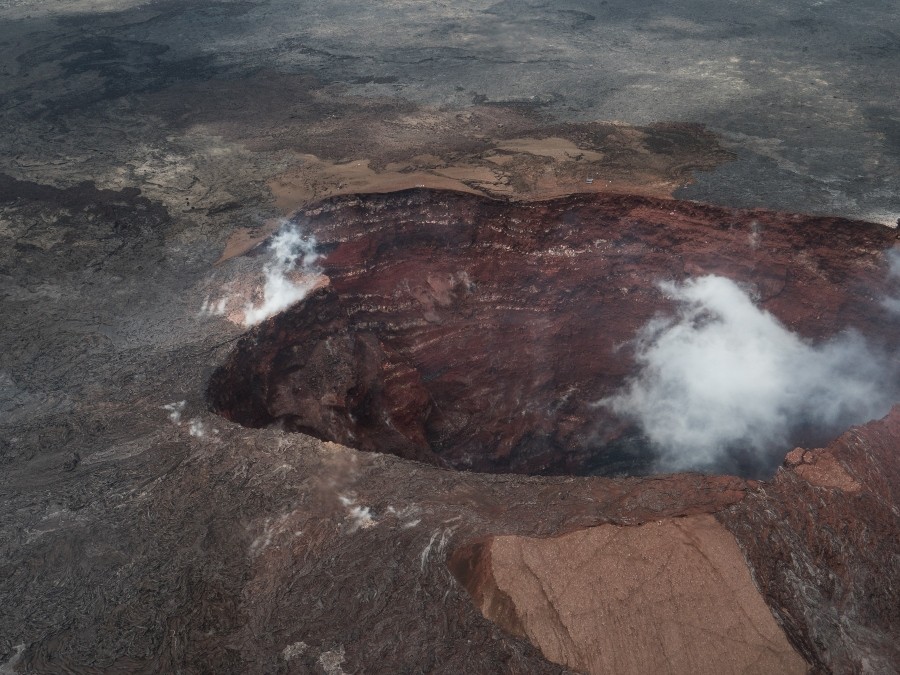U.S. News
Fallout likely as Kilauea Volcano Erupts on Hawaii’s Big Island

WHAT YOU NEED TO KNOW:
- The U.S. Geological Survey (USGS) tweeted Monday morning that Hawaii’s Kilauea volcano erupted for the second time late Sunday night since 2018.
- The eruption, which occurred around 9:30 p.m. local time, was followed by an earthquake with a 4.4 magnitude.
- The USGS warned Hawaii residents to stay indoors because of a possible ashfall in the Kau Districts brought about by the Southwest trade winds.
For the second time in two and a half years, the Kilauea volcano on Hawaii’s Big Island erupted late Sunday night, the U.S. Geological Survey (USGS) reported.
The eruption, which occurred around 9:30 p.m. local time, was followed by a magnitude-4.4 earthquake on Kīlauea Volcano’s south flank, the report continued.
“The Hawaiian Volcano Observatory reports an eruption at the Halemaumau Crater of the Kilauea Volcano,” says the County of Hawaii Civil Defense in a Monday morning tweet, adding that trade winds will propel any embedded ash toward the Southwest.
“Fallout is likely in the Kau District in Wood Valley, Pahala, Naalehu and Ocean View. Stay indoors to avoid [exposure],” the tweet further warned.
Photos of the eruption as well as videos have been shared by the USGS on their Twitter feed including a shot that showed lava gushing into the summit water lake, “boiling off the water and forming a new lava lake.”
“The northern fissure, pictured, was producing the tallest lava fountain at roughly 50 m (165 ft), and all lava was contained within Halema’uma’u crater in Kīlauea caldera,” the caption read.
One user posed a question saying: “When was the last eruption inside the main crater?”
In response, the USGS wrote that the last time an eruption like this one with summit fissures was probably in 1982.
In addition to the 4.4-magnitude earthquake, several smaller earthquakes ranging from 2.5 to 2.7 magnitudes took place over the past hours.
Kilauea last erupted in May 2018. At the time, the area was jolted by hundreds of earthquakes with magnitudes of 5.0 or higher that were triggered by the collapse of the Puu Oo crater floor, according to reports from the Associated Press.
“The fissures are deadly, very deadly. We’re currently in a condition red because of the increased ash in the area,” Hawaii Police Department spokesman Allan Richmond told PEOPLE in May 2018.
“It’s a dicey situation and no one knows how long it will last and how it will end, just dealing with Mother Nature. We’ve had no injuries which is the good news,” Richmond added.
The 2018 eruption destroyed more than 700 homes over a span of four months and forced more than 1,500 Hawaii residents to evacuate.
Source: PEOPLE
